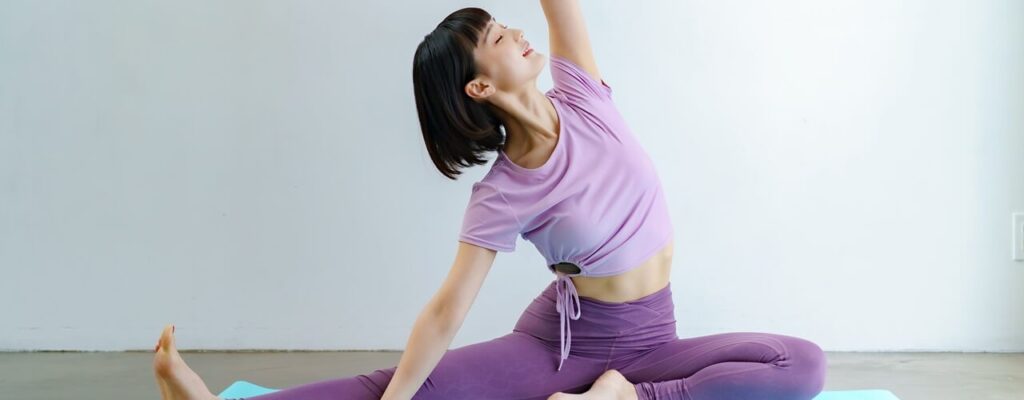Exercise Therapy for Pelvic Floor Dysfunction

Pelvic floor dysfunction refers to a range of issues affecting the muscles, ligaments, and connective tissues in the pelvic region, leading to symptoms like urinary incontinence, pelvic pain, and discomfort during intercourse. Pelvic floor dysfunction can significantly impact daily life, causing discomfort and affecting overall well-being. However, there’s hope. Exercises tailored to improving pelvic floor health can offer relief and restore function. Let’s explore how pelvic floor dysfunction and exercise go hand-in-hand during your recovery.
Exercises targeted at strengthening and relaxing pelvic floor muscles can help manage symptoms and improve quality of life. If you’re experiencing pelvic floor dysfunction, call our team at Smith Physical Therapy & Wellness in Taft, TX today for more information on how we can help you reclaim your comfort and confidence.
Unveiling the Benefits: Exploring the Connection of Pelvic Floor Dysfunction and Exercise
Exercises tailored to pelvic floor health offer a multitude of advantages, including:
Improved Muscle Strength
- Strengthening the pelvic floor muscles can enhance support for pelvic organs, helping reduce symptoms of organ prolapse and incontinence.
Enhanced Coordination
- Specific exercises can promote better coordination between pelvic floor muscles and surrounding structures, helping improve bladder and bowel control.
Pain Reduction
- Gentle stretching and relaxation exercises can alleviate pelvic pain and discomfort, restoring comfort and mobility.
Boosted Confidence
- As symptoms of pelvic floor dysfunction improve, individuals often experience increased confidence and a greater sense of control over their bodies and daily activities.
Empowering Your Recovery: Essential Exercises for Pelvic Floor Dysfunction
Ready to take charge of your pelvic floor health? Here are some exercises and stretch recommendations to incorporate into your daily routine. However, these are general recommendations, so you must consult a physical therapist before performing any new exercises to ensure you execute the movements correctly. Working with a physical therapist can also give you a personalized treatment plan for your pelvic floor dysfunction and unique situation.
Kegel Exercises
- Lie down on your back with your knees bent and feet flat on the floor. Identify your pelvic floor muscles by imagining that you’re trying to stop the flow of urine or prevent passing gas. Contract these muscles by squeezing them inward and upward. Hold the contraction for 5 seconds, then release and relax for another 5 seconds. Aim to perform 10-15 repetitions of this contraction-relax cycle, gradually increasing the duration of each contraction as you become more proficient. Breathe normally throughout the exercise, avoiding breath-holding or tensing other muscles.
Pelvic Tilts
- Lie on your back with knees bent and feet flat on the floor, hip-width apart. Engage your abdominal muscles by gently pulling your belly button toward your spine, flattening your lower back against the floor. Tilt your pelvis upward by pressing your lower back into the floor. You should feel a gentle arch in your lower back. Hold this position for a few seconds, then release and return to the starting position. Repeat the movement 10-15 times, focusing on the quality of the movement rather than the quantity.
Bridge Pose
- Lie on your back with knees bent, feet flat on the floor, and arms resting by your sides. Engage your core muscles by gently bringing your belly button toward your spine. Press into your feet to lift your hips toward the ceiling, creating a straight line from your shoulders to your knees. Squeeze your glutes and pelvic floor muscles at the top of the movement. Hold the bridge position for a few seconds, maintaining a steady breath. Slowly lower your hips back down to the starting position. Repeat the exercise 10-15 times, focusing on controlled movement and proper form.
Deep Breathing
- Find a comfortable seated or lying position, with your spine tall and shoulders relaxed. Place one hand on your chest and the other on your belly. Inhale deeply through your nose, allowing your belly to expand as you breathe in. Feel your hand on your belly rise. Exhale totally through your mouth, drawing your belly button toward your spine. Feel your hand on your belly fall as you exhale. Continue this deep breathing pattern for several breaths, focusing on relaxing your pelvic floor muscles with each exhale. Practice deep breathing for a few minutes a day to promote relaxation in the pelvic region.
Navigating Your Recovery: What to Expect with Physical Therapy
Here’s what you can expect from a personalized physical therapy plan with our team:
Comprehensive Assessment
- A skilled physical therapist will thoroughly evaluate your condition to understand your symptoms and develop a personalized treatment plan.
Tailored Exercises
- Your therapist will prescribe specific exercises and stretches tailored to your needs and goals, ensuring a safe and effective approach to recovery.
Education and Support
- You’ll receive valuable education on pelvic floor health and self-care techniques to empower you on your journey to wellness.
Progress Tracking
- Your therapist will monitor your progress closely, adjusting your treatment plan as you progress to optimize outcomes and ensure your comfort and satisfaction.
Take the First Step Toward Pelvic Floor Dysfunction Relief with Physical Therapy
Don’t let pelvic floor dysfunction hold you back from enjoying life to the fullest. With exercise therapy tailored to pelvic floor health, relief is within reach. Contact our clinic today and take the first step toward a more comfortable, confident you. Let us guide you on the path to pelvic floor wellness.
Call our team at Smith Physical Therapy & Wellness in Taft, TX to learn more about pelvic floor dysfunction and exercise. Your journey to relief starts here.

